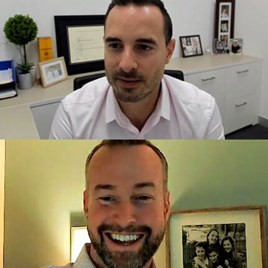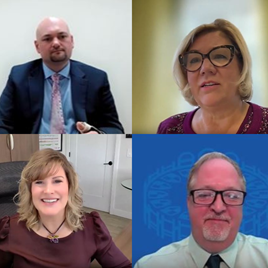Nov 17 2023
Prospecting mistakes to avoid to propel your business forward
Topics covered
Prospecting is one of the most essential aspects of the sales process for any financial advisor in Singapore. However, it has also been found to be one of the most challenging steps in the process. In fact, a sales statistics report done by HubSpot in 2022, shares that 60% of customers say “no” four times before saying “yes”, with 80% of sales requiring five follow-up calls to complete. At the same time, the report shows 44% of service providers give up after the first follow-up call. With these statistics stacked against financial advisors, it is understandable why many advisors may feel discouraged through the prospecting process.
To help financial advisors navigate their way out of this hurdle, here are three things that you should remember to avoid doing when prospecting to ensure every session is a positive step toward a new client.
- Attending a meeting unprepared
So, you have managed to set up a meeting with a prospect, have you prepared for the next steps? The right preparation at the start can make all the difference in setting the foundation for a strong long-term relationship.
First, be clear on the key points you would like to speak about during a session and plan the flow of conversation. An understanding of your prospects’ background and what is most important to them will help you better focus on which products to recommend.
As shared by Huang Weiqi, a six-year MDRT member from Singapore, “With a few clicks, clients can access an abundance of financial information, utilize free tools to calculate their needs and even make direct purchases, all without speaking to a person. If they can “DIY” their financial management, why would financial consultants still be needed?
We are able to provide two key ingredients to a client’s lifelong financial planning journey - empathy and competency. Empathy in understanding the uniqueness of every individual’s life circumstances, preferences, aspirations and resources, it guides them towards prioritizing what’s important, empowers them to take action and stay on course. Competency comes in to shed light on the various options and tools available and skillfully design strategies that will enable clients to make smart moves to get ahead.”
It is useful to create a quick script based on these two important elements to identify a focus for the session and make the meeting beneficial and efficient for all parties involved.
Next, aside from the main products you think would make the most sense for the prospect, prepare some basic knowledge of products which are not on the meeting agenda. This is important so that if the prospects have any questions about other products to meet their financial needs, you will be able to provide some insight into it before coming back to them at a later date with more in-depth information. This knowledge of a range of products helps build confidence with your prospect on your abilities to provide well-rounded advice and consult on their finances.
It can help to define each product with three unique selling points to remember them by, which also serves as a reminder of why each product is different, to avoid confusion by all parties.
As shared by Jesvin Kaur, 14-year MDRT member, “Nobody expects you to be an expert on everything, but you should know enough about what you’re selling to exude confidence and answer most questions. If you’re still a little shaky about details, create PowerPoint slides beforehand that would address some of these expected questions about the product or have someone you can call on to provide support if necessary.”
- Pitching products with a cold relationship
Have you ever had someone come up to you at a mall and start telling you the types of products they carry and what they think you are looking for, such as facial products or fragrances? Most probably you have — remember that feeling of annoyance, as they are shoving products you hold no interest in.
Instead, start by asking questions and listening. This helps to build relationships that show you are genuinely trying to understand the underlying concerns your prospect is facing. This will, in turn, help you better focus on creating a fully personalized experience for the prospect.
As Daniel Lim, four-year MDRT member shares, “I believe rapport will be present when the prospect feels understood. Once they know that we know them, the battle is half won. To do so will require us to listen actively. The things we want to listen actively to include the prospect’s experiences, their lessons learnt and successes. To get them to share, I ask!
Sometimes, we may need to break the ice a little and make it conducive for the prospect to share their stories, the technique I employ is to find opportunities within the conversation to share about my story: How I landed in my current role, the pride I have in the work that I do and the satisfaction I get from this business. I try to do so with some enthusiasm and people tend to reciprocate to that. Usually when we share about a certain topic, our audience will do the same and share their similar experience, and when we inject enough energy, they will also return the same energy.”
- Display bad meeting etiquette
As 90% of communication is non-verbal, it is especially important when you are looking to make a good first impression. While you’re meeting with prospects whether physically or virtually, be aware of how you’re projecting yourself in addition to how you’re speaking.
For example, making proper eye contact is a good indicator of your level of interest. Sitting up straight with arms open and speaking with a smile are important as well when looking to show your interest and openness in the conversation. Consider practicing with a friend or a mirror. It might feel uncomfortable at first, but it’s important for this to become natural to you.
Finally, avoid constantly checking your phone or smart devices during your conversation, as this could come across to your prospect that you have something more important to attend to.
A three-year MDRT member from Singapore, Karyl Phua shares that “non-verbal communication is highly important, as the right body language can allow your client to feel respected during the conversation”.
Prospecting will always pose its fair share of challenges to financial advisors through their entire profession. But with the right preparation, a focus on understanding what the individual really cares about, and presenting yourself with calm and confidence, you’ll be that much closer to closing the deal.
Contact: MDRTeditorial@teamlewis.com





![Elevating your financial advisory journey: how the right mentor can propel your success to new heights [Surabhi Chaudhary]](https://www.mdrt.org/globalassets/digizuite/32702-en-updated_-india_video-interview_surabhi-chaudhari-thumbnail.png?height=268&crop=0,0,268,268)

![Beyond finance: Individuals outside the financial profession every financial advisor should learn from [Nirmal Debnath]](https://www.mdrt.org/globalassets/digizuite/32634-en-india_written-interview_nirmal-debnath-thumbnail.jpeg?height=268&crop=0,0,268,268)
![How to tailor financial advice to fit the unique needs and goals of your clients [Merryl Baptista]](https://www.mdrt.org/globalassets/digizuite/32635-en-india_written-interview_merryl-baptista-thumbnail.jpeg?height=268&crop=0,0,268,268)
![Anticipating the financial needs of Gen Z clients and advising prospects towards adequate insurance cover [Komal Atal]](https://www.mdrt.org/globalassets/digizuite/32632-en-india_written-interview_komal-attal-thumbnail.jpeg?height=268&crop=0,0,268,268)
![Enhancing your offline persona through cultivating an online presence: Tips and strategies [Khushboo Bajaja More]](https://www.mdrt.org/globalassets/digizuite/32630-en-india_written-interview_khushboo-bajaj-more-thumbnail.jpeg?height=268&crop=0,0,268,268)
![A former flight attendant's sky-high client servicing standards [Beth Daffodil Uy Tan]](https://www.mdrt.org/globalassets/digizuite/32577-en-ph-_video-interview_a-former-flight-attendant's-sky-high-client-servicing-standards_daffodil-tan-thumbnail.png?height=268&crop=0,0,268,268)



![Overcoming a financial advisor’s internal self-doubts [Cedrick Cruz]](https://www.mdrt.org/globalassets/digizuite/32509-en-ph_written-interview_-handling-a-financial-advisors-self-doubts-cedrick-cruz-thumbnail.jpg?height=268&crop=0,0,268,268)